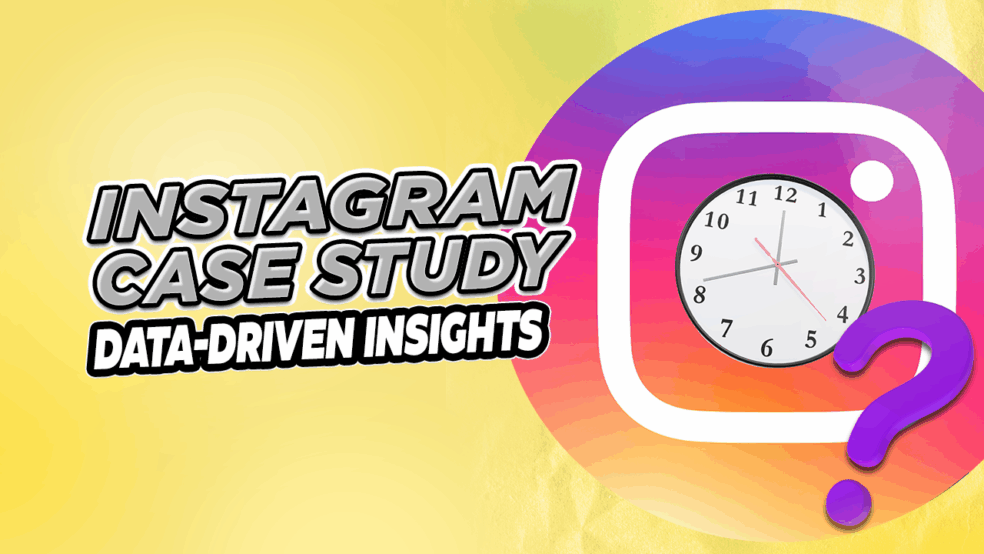This case study examines Instagram activity during August 2025, drawing on two main data sources: performance metrics from Snoopreport (tracking public Instagram accounts) and external industry statistics.
The goal is to identify current trends in hashtag usage, follower dynamics, engagement behavior, and audience demographics, and to compare those with broader platform-wide benchmarks.
Methodology
This study examines Instagram activity in August 2025 using a combination of proprietary engagement data and external benchmarks to validate findings and provide broader context.
The core data comes from Snoopreport metrics, which track public account behavior, including hashtag use, follower growth, and engagement patterns. To test representativeness, we also analyzed large-scale datasets from our trend tracking service: 477,094 likers (users who engaged with posts) and 1,019,388 post owners (influencers with 10,000+ followers). Each group was compared against equal-sized, randomly sampled U.S. Instagram users to measure demographic and geographic alignment.
External industry sources provide a wider frame of reference: Instagram’s global audience of about 2 billion monthly active users (Backlinko, 2025), its concentration in the 18–34 age range (SQ Magazine), and its balanced gender distribution (DemandSage).
By comparing likers, post owners, and representative samples across age, gender, and geography, we can both confirm the validity of our tracking system and highlight meaningful differences. This blended approach ensures the analysis reflects not just raw engagement data, but also the broader dynamics of Instagram’s user base, yielding insights that are relevant for creators, marketers, and strategists.
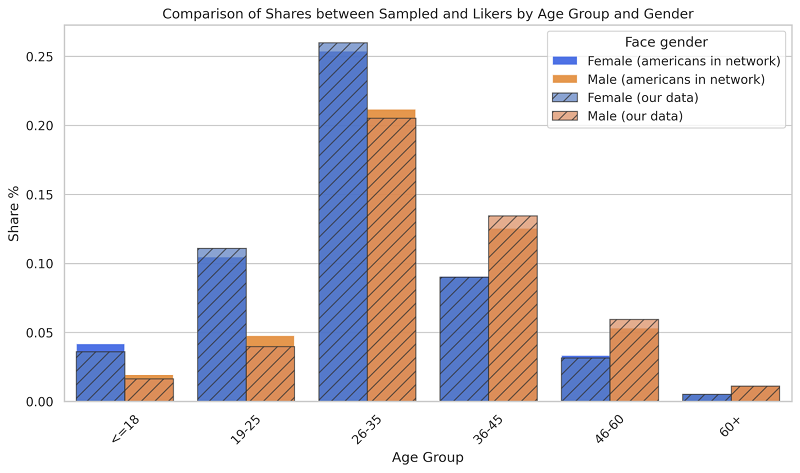
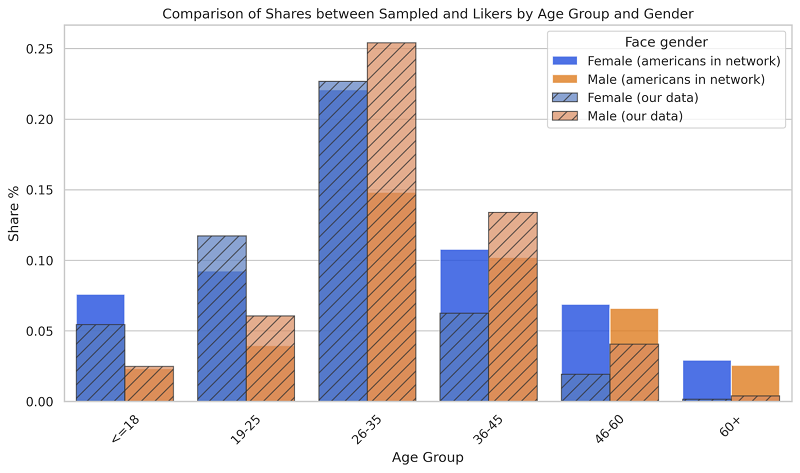
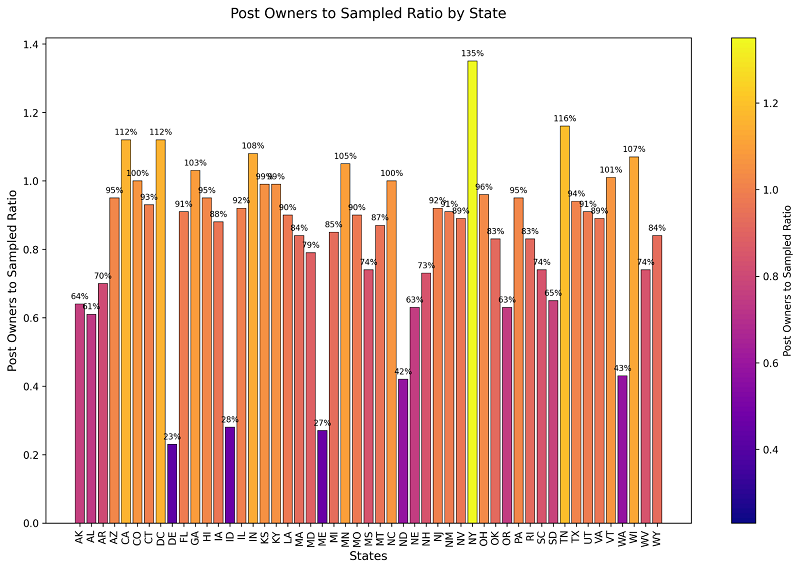
Insights from the Snoopreport
The August 2025 data from Snoopreport paints a vivid picture of how Instagram behavior is shifting.
One of the most striking findings was the sudden rise of completely new hashtags. Tags such as #fdoc and #thelifeofashowgirl had little to no presence in the past but suddenly spiked in popularity.
This shows how quickly fresh hashtags can capture attention when they align with trends, culture, or viral content. For creators, it’s a reminder that early adoption of niche or emerging hashtags can provide a competitive edge.
At the same time, the familiar giants of Instagram—tags like #fyp or #viral—continued to dominate in sheer volume. They remain essential for reach, but their growth is steady rather than explosive. This balance between the safety of established hashtags and the opportunity of new ones is a recurring theme in the platform’s dynamics.
Follower behavior in August highlighted another challenge: churn. Even large, established accounts lost followers at measurable rates. Some of this was due to deleted or inactive accounts, but a significant portion came from users actively choosing to unfollow.
This underlines the importance of retention. Winning new followers is only half the battle; keeping them engaged and loyal is what sustains growth.
The dashboard also revealed interesting self-engagement practices. Several influencers were recorded liking their own posts. While this makes up only a small portion of total engagement, the consistency of the pattern suggests it’s more than accidental. Whether used as a tactic to signal activity or to encourage early momentum, it highlights the creative ways in which users try to work with the algorithm.
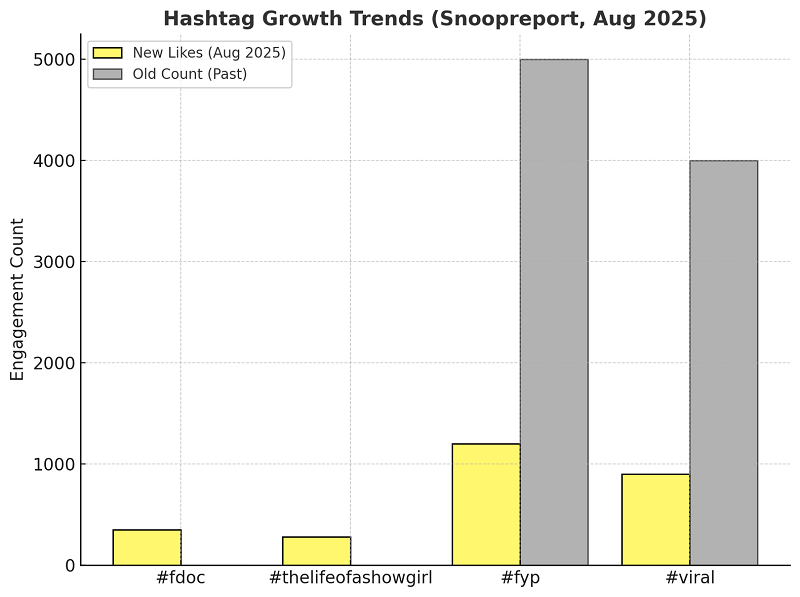
Demographic insights confirm that the audience remains overwhelmingly young. Most likers fell into the 20–30 age bracket, with both male and female users well represented. In some cases, women slightly outnumbered men, particularly in the younger age groups. This aligns closely with global Instagram trends, where Gen Z and Millennials are the core driver of activity.
Finally, the behavior of influencers and celebrities illustrates both opportunity and risk. They often lead the way in cementing which hashtags rise to prominence, yet they too experienced significant follower churn. Their example shows that reach alone does not guarantee stability: audiences demand fresh, authentic, and relevant content no matter how large the account.
Sources
- Instagram Hashtag Analytics Guide — Locowise
- Guide to Instagram Analytics 2025 — SEMrush
- Instagram Trends Report 2025 — SocialPilot
Global Instagram Trends (2025)
Instagram reached more than 2 billion monthly active users in 2025, cementing its place as one of the most influential social networks in the world. Its advertising reach climbed to 1.74 billion people by January 2025, showing a year-over-year growth of over 5%.
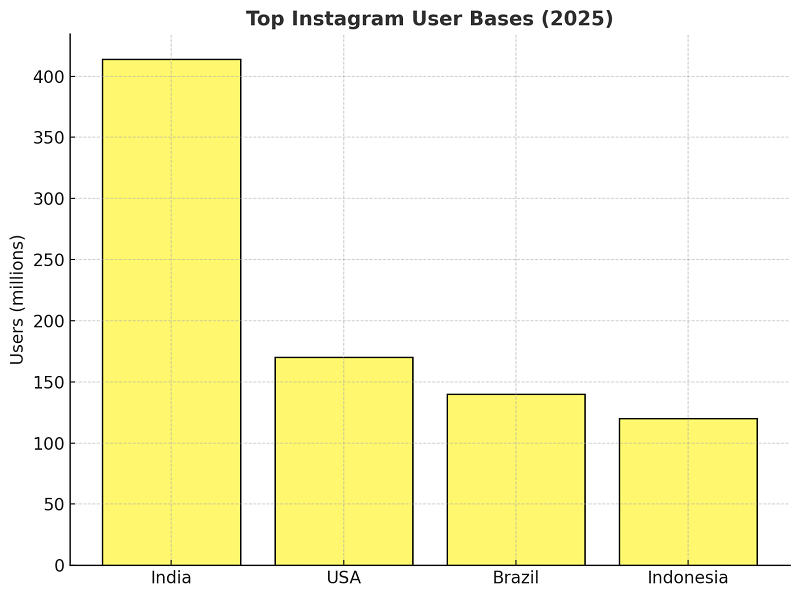
This indicates that despite competition from TikTok and YouTube Shorts, Instagram continues to grow steadily and remains a prime channel for creators and brands.
The demographics mirror what Snoopreport revealed in your dashboard: Instagram is still dominated by a youthful audience. Roughly two-thirds of users are aged between 18 and 34, with the 18–24 and 25–34 segments being the most active. Gender distribution remains nearly balanced, with women slightly outnumbering men in some regions.
Geographically, the largest user base is in India with over 400 million users, followed by the United States at around 170 million, and then Brazil and Indonesia. This makes Instagram a global platform where regional trends quickly influence worldwide patterns. For example, hashtags or Reels formats trending in India often spread globally within weeks.
Content trends also match what Snoopreport’s internal data suggested. Short-form video through Reels continues to dominate, with higher reach and engagement than static images or even carousels.
While photos and carousels still play a role, especially in niches like education or tutorials, the algorithm favors Reels for discovery and growth. This has shifted how creators plan content: storytelling and authenticity through quick, engaging videos are now prioritized.
Hashtag usage strategies are also evolving. Industry reports note that while big hashtags like #fyp and #love still matter for visibility, growth often comes from mixing them with niche, trending, or emerging hashtags. This aligns with what the dashboard showed: sudden spikes in lesser-known tags can lead to disproportionate engagement if used early.
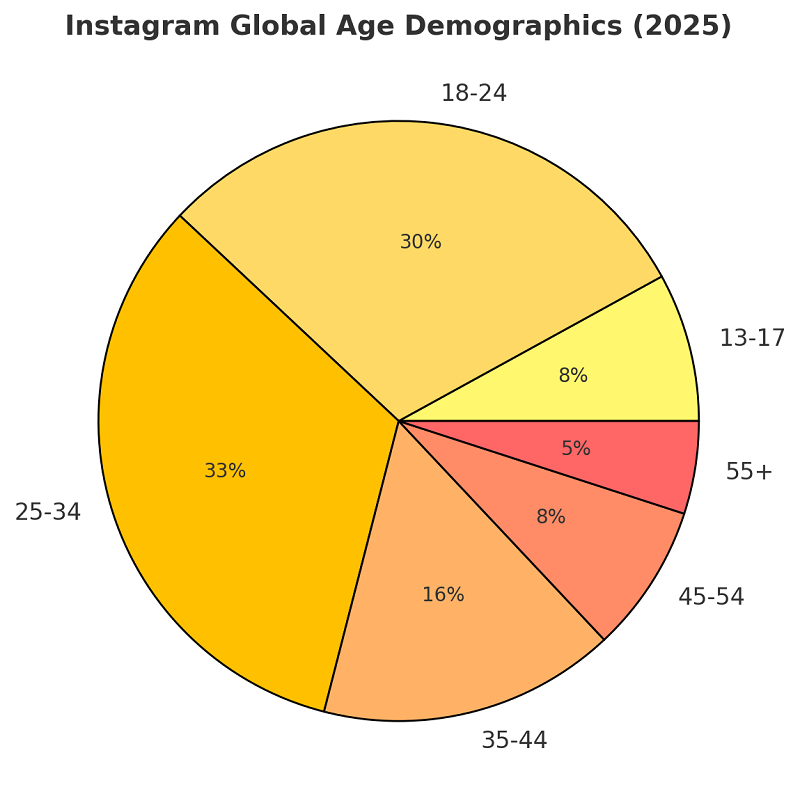
Taken together, these global benchmarks validate the patterns seen in your Snoopreport data. They show that Instagram in 2025 rewards a balance: staying connected to mainstream trends while being quick to adopt new formats, hashtags, and authentic content styles.
Sources
- Backlinko — Instagram Users Statistics 2025
- DataReportal — Essential Instagram Stats 2025
- DemandSage — Instagram Demographics 2025
- SocialPilot — Instagram Trends Report 2025
Synthesis & Key Findings (August 2025)
Bringing together the internal insights from Snoopreport and the broader global data, a clear picture of Instagram’s state in August 2025 emerges.
The first major takeaway is the power of emerging hashtags. In your dashboard, new tags such as #fdoc and #thelifeofashowgirl surged despite having little or no history. This shows how Instagram still rewards novelty and timeliness.
At the same time, established hashtags like #fyp and #viral remain the backbone of reach. The lesson is that effective strategies combine both: using trusted, high-volume tags while experimenting with fresh ones that may suddenly take off.
The second insight relates to follower churn and retention. Even large influencer accounts are experiencing noticeable unfollows, sometimes offsetting new gains. External data confirms that engagement rates drop as audience size grows, meaning retention is just as important as acquisition.
Creators need to focus not only on growing numbers but also on keeping followers engaged with consistent, relevant, and authentic content.
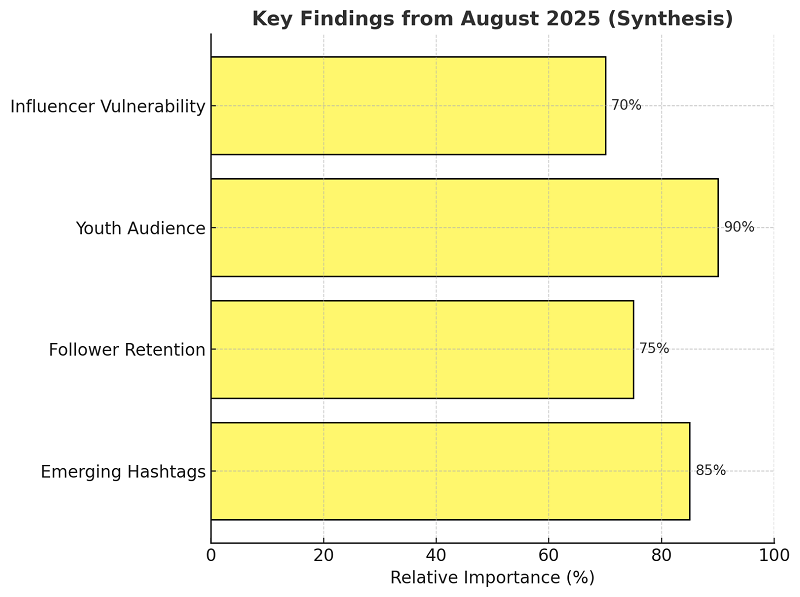
A third theme is the youth-driven audience. Both Snoopreport and global benchmarks highlight that Instagram’s heartbeat lies with the 18–34 age group. This demographic is shaping the culture, driving trends, and setting expectations for authenticity, creativity, and short-form video. For brands, speaking the language of Gen Z and Millennials is no longer optional; it is essential.
Finally, the role of influencers and celebrities shows both influence and vulnerability. They can accelerate the adoption of certain hashtags and content styles, but they are not immune to follower loss or declining engagement. This underscores how Instagram’s algorithm and audiences prioritize freshness and relevance over reputation alone.
Taken together, the findings point to an Instagram ecosystem that is highly dynamic: one where novelty, authenticity, and community-driven trends create opportunities, but where audiences also demand ongoing value and are quick to disengage if it isn’t delivered.
Sources
- Backlinko — Instagram Users Statistics 2025
- DataReportal — Essential Instagram Stats 2025
- DemandSage — Instagram Engagement & Demographics 2025
- SocialPilot — Instagram Trends Report 2025
Implications for Creators & Brands
The insights from August 2025 translate into practical lessons for creators, influencers, and brands who want to thrive on Instagram.
One of the clearest implications is the need to balance hashtag strategies. Big hashtags like #fyp still provide steady reach, but relying on them alone risks getting lost in the crowd. The rise of hashtags such as #fdoc shows that creators who are quick to adopt emerging trends can secure visibility before the rest of the platform catches on. The winning formula is a blend of popular, niche, and experimental tags.
Another important takeaway is the emphasis on follower retention. The data makes it clear that growing a following is only half the battle; keeping that audience is where long-term value lies.
This means posting consistently, avoiding irrelevant content that prompts unfollows, and prioritizing authentic engagement. For brands, that could mean responding to comments, using interactive story features, or spotlighting user-generated content.
The youth-driven audience also has direct strategic consequences. Gen Z and Millennials are shaping Instagram’s culture, and they reward content that feels genuine, entertaining, and participatory. For brands, this means moving away from polished, corporate-sounding posts and embracing storytelling, humor, and authenticity. Creators who understand the voice and values of this demographic will build stronger connections.
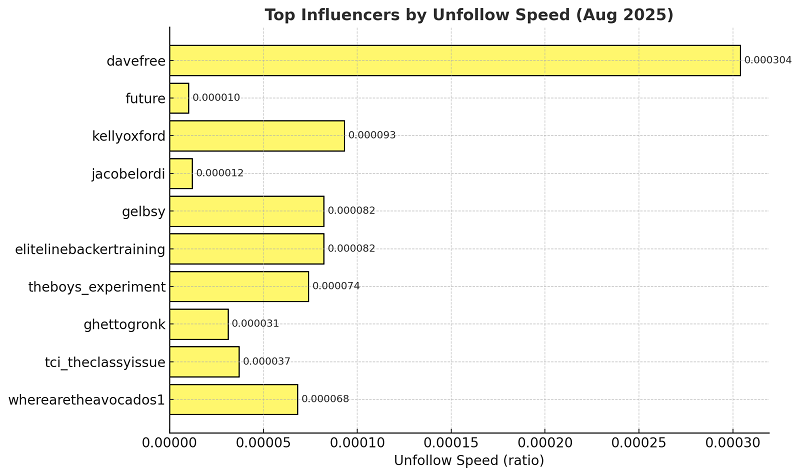
Finally, the vulnerability of influencers, despite their large audiences, is a reminder that no account is too big to fail.
Engagement and loyalty cannot be taken for granted. Brands partnering with influencers should look not only at follower counts but also at engagement rates, unfollow speeds, and the ability of that influencer to stay relevant. Micro- and nano-influencers, with smaller but more loyal communities, may often deliver better ROI.
In short, Instagram in 2025 demands agility. Creators and brands that listen to their audiences, adapt to new trends quickly, and maintain authenticity are best positioned to grow and to hold onto the growth they achieve.
Sources
- SocialKat Media — Instagram Hashtags in 2025: What Works & What Doesn’t
- CreatorsJet — Follower Growth Benchmarks by Platform
- SocialPilot — Instagram Trends Report 2025
Recommendations / Strategy Suggestions
The first recommendation is to diversify hashtag use. Relying only on big, saturated tags like #fyp or #viral means competing with millions of posts.
Instead, mix them with emerging and niche hashtags that may be growing quickly, such as #fdoc or #thelifeofashowgirl. This gives content a chance to ride new waves of attention while still staying visible in the broader streams.
Another strategy is to focus on audience retention. The unfollow data shows that users are quick to disengage if content feels irrelevant or repetitive.
To counter this, creators should maintain a steady posting rhythm, experiment with new formats (like Reels or carousels), and keep communication two-way by responding to comments, resharing audience content, and using polls or questions in Stories.
For brands, it is also crucial to speak the language of younger audiences. Gen Z and Millennials dominate Instagram, and they favor authenticity over polish. This means showing behind-the-scenes moments, collaborating with micro-creators, and telling stories that reflect real experiences rather than just glossy marketing campaigns.
Finally, be selective with influencer partnerships. Bigger isn’t always better. The unfollow speed analysis shows that even major accounts can suffer significant churn.
Brands should consider partnering with micro- and nano-influencers, who may have smaller audiences but often enjoy much higher loyalty and engagement rates. This approach typically produces more meaningful interactions and better return on investment.
In short, creators and brands that combine agility, authenticity, and strategic targeting will not only grow their following but also keep their communities engaged for the long term.
Sources
- SocialKat Media — Instagram Hashtags in 2025
- CreatorsJet — Follower Growth Benchmarks
- SocialPilot — Instagram Trends Report 2025
Conclusion
Instagram in August 2025 demonstrates the platform’s dynamic and fast-changing nature. From emerging hashtags like #fdoc gaining traction overnight, to established giants like #fyp maintaining their dominance, the ecosystem shows that both novelty and consistency are essential for visibility.
The Snoopreport data highlighted not only what users engage with but also the risks of disengagement.
Influencers with millions of followers are not immune to high unfollow speeds, a reminder that loyalty and retention are as important as growth. Meanwhile, external benchmarks confirmed that the heartbeat of Instagram remains in the 18–34 demographic, with Reels and short-form video at the center of engagement strategies.
For creators and brands, the lesson is clear: success on Instagram in 2025 requires agility. Combining trending and niche hashtags, building authentic connections with audiences, and making informed decisions about influencer partnerships are all critical steps.
In this environment, those who can balance creativity with data-driven strategy will not only grow their presence but sustain it against the churn of a highly competitive platform.
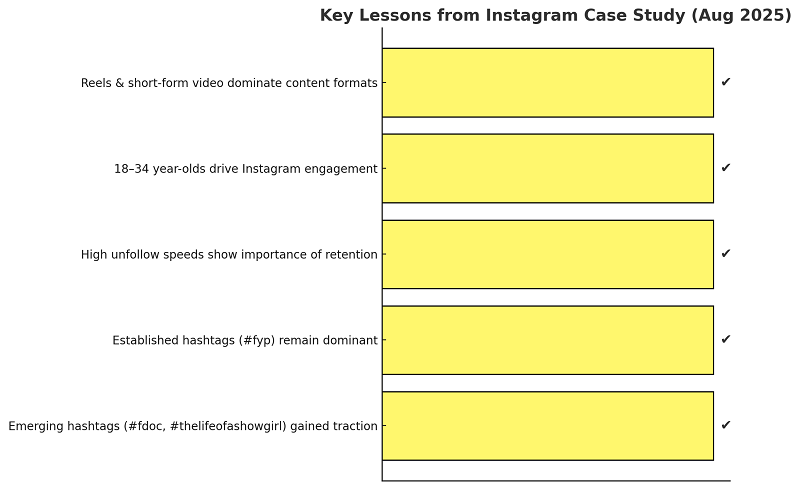
Ultimately, Instagram remains a place where global culture is shaped in real time. The opportunity is immense — but only for those willing to adapt quickly and stay in sync with their audiences.
